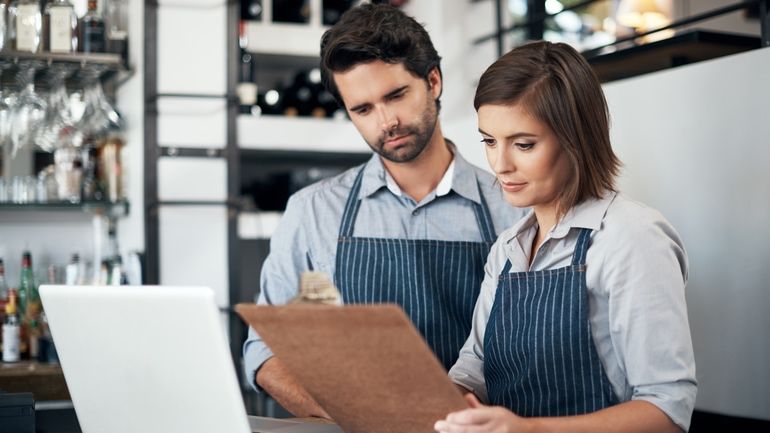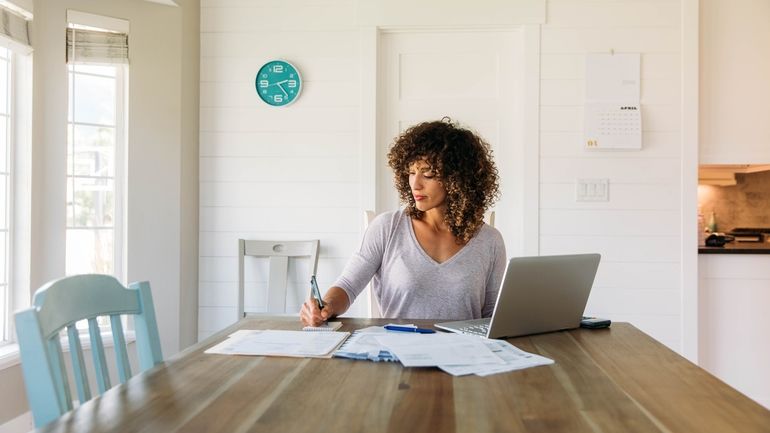Amid the rapid spread of COVID-19, preparing for a restaurant closing has become an unfortunate reality, even on a temporary basis.
Some restaurant owners have decided that staying open isn’t worth the risk, while others have their hands tied with strict government regulations that have come into place – or will soon.
But properly preparing for a temporary restaurant closing isn’t as simple as locking the doors and double checking that all the lights are off. There are many areas of your business to consider when closing down, both to minimize the financial bleed of being closed and make it a smooth transition when you can reopen.
We’ll go over everything you’ll want to consider if you’re closing your doors temporarily, to ensure reopening goes as smoothly as possible.
Choose a Date
As much as you’re able to, choose a specific date to shut down your operations. Since the regulations around what’s allowed and what is not changes every day, the choice of the day may fall out of your hands or end up feeling rushed.
If you can choose a date, it gives you time to better plan your communications, get rid of inventory, and discuss rent with your landlord. You’ll also be able to better plan your budget – how much will you be saving on inventory orders if you’re closed? How do your monthly expenses shift when you won’t be doing payroll?
Keep in mind that you’ll essentially have to be choosing two dates – a date to close to the public and a date you close operations. The main difference is that one date will be the end of serving food, whereas you may want to keep staff on longer to help with closing everything down.
Communicate with Guests and Staff
Next, communicate with your guests and staff. Both need to know the date that applies to them, but what you communicate to each group will look a little different. Once you have a date decided, it’s time to plan your communications with the different parties involved.
Here’s what you’ll want to make sure each group knows.
What to Communicate to Diners
You’ve likely been communicating with your diners a lot more than normal – sharing reduced hours, changes in operations, and assurances you’re keeping your operation safe according to new standards.
With this communication, you’ll want to let them know the exact date you’ve decided to close, why you’re doing it, and what you will offer until then. Make sure to also thank diners for their continued support up until this point – and beyond. If you want some inspiration, check out this email Mildred’s Temple Kitchen sent out to diners (which included the recipe for their famous pancakes for guests to enjoy at home in the meantime!):

While you’re closed, you can also consider some regular communications while you’re closed down through email or social media. Just like Mildred’s did, you could consider sharing a recipe to stay top of mind.
What to Communicate to Staff
Just like this restaurant is your livelihood, it is for your staff as well. Communicate with them as early as you can when you decide to close so they can plan for the future, based on the income they can expect.
When you give them notice, arm them with resources for success, like information on government funds, relief programs, or unemployment insurance, to support them as best you can during such uncertainty.

Sell Off Inventory
Getting rid of inventory – especially food inventory that will go bad – is important for a restaurant closing, especially a temporary one. You don’t want to get the go-ahead to return to the kitchen only to find it full of spoiled food or pests.
To start, you’ll want to do a last inventory count to see what you actually have. What you have available will help you determine what to actually do with that food. Depending on your stock, here are some options of what to do with inventory you won’t be able to use up before you close down:
- See what you can take home: If there are any ingredients you’ll use for your own cooking at home, take it with you. You’ll save a little bit on personal groceries this way.
- Preserve food: Avoid throwing things out by finding ways to preserve them. You can pickle fruits or vegetables, turn herbs into olive oils, or use remaining ingredients to make stock to freeze for later use.oth. Then – bonus! – you can use these when you reopen.
- Create DIY meal kits: Restaurants are taking their ingredients to make do-it-yourself meal kits for diners to purchase. It’s a great way to earn some extra cash.
- Donate to food banks: Food banks are struggling more now than ever to keep at-risk Americans fed. If you’re able to, consider donating some of your inventory to foodbanks
Once you’ve cleared out or repurposed your inventory, you can start cleaning without having to work around full fridges and pantries.
Clean and Store What You Can
Now that you’ve sorted through inventory (and hopefully gotten rid of a good amount of it), it’ll be easier to clean out the rest of your restaurant.
Here are some areas to look at when cleaning:
- Refrigerators and freezers: Once you’ve gone through your inventory, it’s a great opportunity to give your refrigerators and freezers a deep clean. You also want to make sure you haven’t missed any food or spills.
- Pantries: Similar to your fridge and freezer, give your pantries a good clean. A lot of this will be taken care of as you move inventory, but this will serve as an important double check. Keep in mind this clean includes your condiments and dry goods – think salt, pepper, or sugar, or anything that is normally in the front of house (on tables, side stations, or kitchen galleys). You want to make sure these are cleaned and stored properly to prevent pests.
- Behind the bar: Think of all the garnishes you keep behind the bar – lemons, limes, cherries, to name a few. You definitely don’t want to come back to the bar plagued with rotten food or pests. Make sure all of those areas are cleaned out.
- Garbage: Just like stale food, you don’t want to come back to your restaurant with it smelling like stale garbage. Ensure all garbages are cleaned out and disposed of properly
- Cutlery and dishes: Clean all cutlery and dishes to ensure they’re good to go upon your return
- Any table surfaces: Give bars, tables, and food preparation stations a thorough wipedown.
It can seem daunting to do a deep clean, but think of it this way: leaving a restaurant in a clean state is only going to set you up for an even smoother re-opening. It will help you get back up to speed faster and more easily when everything is already spotless.
Talk to Your Landlord
As millions of people across the U.S. lose their jobs and applications for unemployment reaches record-breaking numbers, rent has become somewhat of a hot topic. There’s been a call from the American working class, asking for a rent freeze until the coronavirus pandemic subsides. This same cry has been echoed in Canada.
If you’re closing down temporarily, let your landlord know and see if they are open to a discussion on a reduced rate or complete freeze. Go into this discussion prepared to negotiate – which may be the case.
People are sharing their different stories of conversations with landlords, and some have stories of super receptive landlords. Some have chosen to suspend rent payments this month and others have reduced rent prices with the promise to negotiate the following month. You never know what they’ll say, so it’s always worth asking.
However, negotiating your rent under these circumstances is unfamiliar territory for both renters and landlords. If you’re not sure how to start this discussion with your landlord and what to cover, here are some of the top tips:
- Reach out as soon as possible: If you know you’re closing down well before the due date, don’t leave the conversation until then. Try to get this conversation going as soon as possible so your landlord doesn’t feel like this was sprung on them – they are also struggling right now.
- Don’t go into the conversation simply refusing: Nothing right now is as simple as just refusing to pay. You want to go into this conversation viewing it as a compromise between you and your landlord, not a battle of hard lines. They’ll be more likely to help if you’re showing you want to work with them.
- Go into the conversation a few options – and be flexible: Just like you can’t go into the conversation simply refusing to pay rent, you also can’t go in with one idea that has no wiggle room. If you want to compromise, you have to offer some suggestions. Come prepared with your ideal outcome and a couple of alternatives.
- Pick a date to revisit the conversation: No matter what the outcome of this conversation is, you’ll want to have a date in place to revisit this topic. Even if all restaurant operations are able to return to normal in a month, people may still be hesitant to come dine out right away, meaning your bottom line won’t go back to normal instantly. For the time being, this needs to be an ongoing dialogue.
If any changes end up being made, make sure to come out of this conversation with something signed that you can reference later. This is especially important if COVID-19 ends up impacting more than one month of your lease agreement.
The materials available in this post are for informational purposes only. We are not lawyers and do not propose to provide you with legal or business advice. As such, the information in this post should not be used as a substitute for obtaining such advice. In particular, we would suggest you contact your attorney to obtain legal advice with respect to the matters discussed in this post.
Look at Recurring Payments
While rent definitely does fall into this category, there are other recurring payments you make every month to keep operating. Since you’ll be temporarily closing down your restaurant, you’ll want to revisit your monthly expenses and see what you can cancel entirely or put on hold.
Not sure where to start? Here are some of the recurring payments you’ll want to consider for your restaurant closing:
- Utilities and maintenance: Reach out to your local provider and let them know you’re closing down. You may still have minimums in place, but work with them on ensuring your bills are as low as possible
- Restaurant technology: You’ll want to reach out to your tech providers (reservations, scheduling software, POS systems, and more). See if they have any arrangements available to defer or put your licenses on hold temporarily. You likely aren’t the first person to reach out to about this. Most major providers will have some type of contingency plans in place at this point. (Pro tip: If you’re a TouchBistro customer, you can go to our Restaurant Recovery Navigator and submit a form to get one-on-one support and a customized solution for your restaurant during this time.)
- Recurring food orders: Talk to your vendors about any recurring orders – you don’t want food orders and the bill for them – showing up unexpectedly.
- Music subscriptions: Look at getting any accounts you use for restaurant music put on hold temporarily
This is by no means an exhaustive list, and the monthly charges will vary from restaurant to restaurant. The best way to find these expenses for your restaurant is by going through your statements from previous months and seeing exactly where your money went. That will help you ensure you don’t miss anything, and have no surprises on your next statements.

File Necessary Paperwork
It’s probably one of the least glamorous parts of your temporary restaurant closing – maybe a close second to cleaning everything – but you might have to do a decent amount of paperwork. Even if you’re closing temporarily, you’ll still want to take a look at the required paperwork and determine what applies to you.
We’ve outlined below what paperwork and resources to look at when you’re closing your business, and the top paperwork to file as an individual to ensure you still have some form of income.
Business Paperwork to File
Just like there’s a lot that goes into opening your business, there’s a lot that goes into closing, even temporarily. If you’re temporarily closing, here are some places to start:
- Go to SBA.gov and look at the Economic Injury Disaster Plan to apply for grants and loan advances. If you are eligible, you can receive advances of up to $10,000 and working capital loans of up to $2 million. These funds can be used to help keep your business afloat during this temporary restaurant closing and offset any costs that you may still have. You can apply for these loans here.
- Apply for paycheck protection through the Paycheck Protection Program by SBA. For the Paycheck Protection Program, SBA will back the loan that your lender provides. You can use 75% of this loan to fund your payroll and the other 25% can be used on mortgage payments, rent and lease payments, or utilities. You can find the application for this program here (Pro Tip: You may want to create a new bank account to hold the funds to make it easy to keep track of what you spend it on. This will make applying for loan forgiveness later even easier.)
Personal Paperwork to File
As much as you’ve been taking care of your business up until this point, you need to also take care of yourself.
Take the time to look at paperwork required for United States Unemployment Insurance so you can have some income throughout these uncertain times. The full coverage varies state by state, so look into what you are entitled to based on your location. Careeronestop offers resources for Americans to get this information and ensure you know what you’re entitled to. You can apply for unemployment benefits here.
Apply for Funding
There’s no simple way to put it – the restaurant industry is taking a major hit due to COVID-19. But different government and nonprofit organizations have stepped up big time to help give business owners in the industry a fighting chance.
And now is the perfect time to do your research and take advantage of these funds. As you ride out your temporary restaurant closing, look for different grants, loans, and funds to help you stay afloat. There are new relief programs coming out constantly and government funding seems to be updated on an hourly basis. Research what’s best for you and your business, to ensure you’re able to open your doors again soon.
Close Your Doors
You’ve let people know, sorted your inventory, filed what you need with the government, and cleaned your location spotlessly. Now, it’s time for what may be the hardest step of them all – actually closing your doors.
Before you leave, do a final walkthrough to ensure that everything you have to be on-site to do is complete. Check that lights are off, food is cleaned out, and everything is organized. Ongoing conversations with your landlord, communications with staff and customers, and other legal paperwork can all be done from the comfort – and safety – of your own home.

Deciding to close your restaurant, even temporarily, may come with a bittersweet feeling – or maybe just bitter for now. It might be the right decision, but that doesn’t make it any easier.
Remember that as eager as you are to return to work, your diners are just as eager to come eat with you again. By closing down temporarily, you’re saving money now so later you can go back to doing what you love. And in the meantime, you’re helping to keep yourself, your team, and your community safe.
In the meantime, you can take a look at TouchBistro’s Restaurant Recovery Navigator for more tips on coping with COVID-19, or email us at [email protected] if there’s anything specific you need more resources on.






